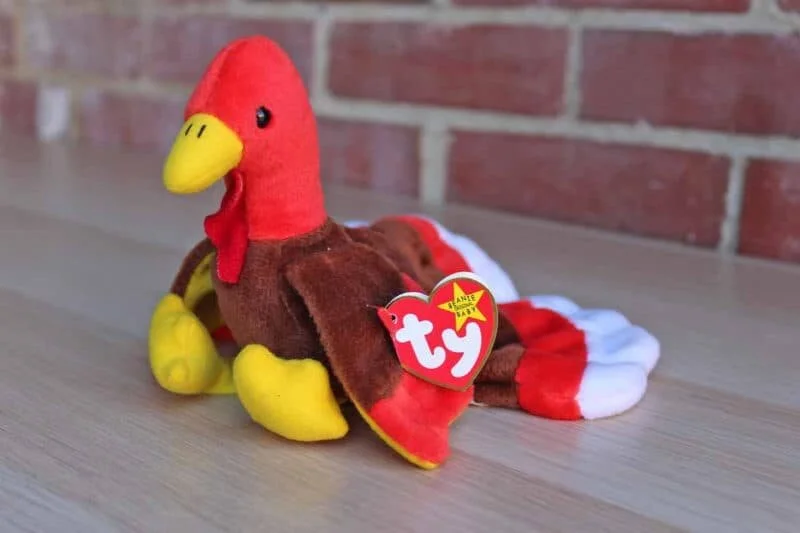There was a political scandal I heard about that changed the way I looked at corruption and helped me understand the larger mechanisms at work in government and society. It rocked the swing state of Ohio right after a disputed election, toppled the state’s one-party rule and ended the Taft legacy that included a President, a U.S. Senator, a Supreme Court Justice. And it started with Beanie Babies.
In Toledo, Ohio, Tom Noe was a small-time rare coin dealer who sought to raise his business prospects by getting involved in politics. He would later testify under oath that giving money to politicians “kept my business alive.” Noe elevated his status as a political player by bundling contributors together in North East Ohio in order to get more attention from statewide candidates. Warm and gregarious, Noe would volunteer as campaign manager for State Supreme Court candidates and take the entire governor’s office out to dinner at Morton’s Steak House down the street (it was dubbed “The Noe Supper Club”). Noe’s goodwill earned him impressive appointments, being the only individual to serve on both the Turnpike Commission and the Board of Regents, an especially impressive role in directing higher education statewide, considering that Tom Noe had dropped out of college after his first year.
Of course it did not stop there. The Ohio Bureau of Workers Compensation, an in-state insurance fund contributed to by employers, oversees a sizable investment portfolio, in the billions, and as such diversifies its holdings with fiscal strategy. At some point it was deemed a good idea to create an investment fund of $25 million, and then an additional $25 million a few years later, at the discretion of Tom Noe’s business empire, which at that point consisted of a hobby shop in a Toledo strip mall.
During his trial, the government would testify that Noe used this BWC fund as his own personal ATM. The list of things Tom Noe blew this money on would make a sheik blush. It wasn’t just the waterfront homes, party boat, Corvette, new pool, it was also political collectibles, like a Christmas card signed by JFK that was highly valued, or a letter signed by Richard Nixon that was not as highly valued.
And guess where even more of that money went, based on this personality profile presented thus far? That’s correct. Back into more campaigns. Tom Noe was the top Republican fundraiser in Ohio, throwing himself a 50th birthday roast that featured the entire Republican ticket as his guests of honor. In the end, because it is so hard to parse where the money went once it went into Noe’s pocket, Governor Taft was hit with ethics charges over much more minor infractions, albeit provable ones — not declaring golf games as gifts that Tom Noe paid for.
And when it came to become a Pioneer in the George W. Bush campaign by raising over $100,000, Tom Noe couldn’t let the opportunity pass. He roped in as many friends as he could to make it happen so that W. would come to see HIM, in Toledo, in front of everybody. Not everyone could fought that up though. So Tom said, “Okay, put in what you can, and I will give you the rest.” This generosity, commonly known as money laundering, involved up to 28 individuals, several of them elected office holders who knew exactly what they were doing.
When investigators into missing funds from the BWC found over $13 million unaccounted for in Noe’s records, it was all the more remarkable as to what did comprise Noe’s $50 million portfolio of Ohio funds: Rare coins. Beanie Babies. Le Bron James jerseys. George W. Bush shot glasses. You know, collectibles. When some of these coins came up missing, that didn’t help, as did records presented by his partner in court proving that some of the coins never existed.
And yet, the coins that did exist in this fund? They appreciated. This was in part because Tom Noe had gotten a special deal to remove taxes from coin shows in Ohio. This brought the coin industry to Tom Noe’s door, and cost the state $50 million is lost revenue, the same amount he was given by the Ohio BWC.
When it all came crashing down, the Republican office holders that benefited so richly couldn’t run far enough from him. The lingering investigation details of what would be known as Coingate made Tom Noe a household name statewide and led to a Democratic takeover of the State House in 2006.
Tom Noe went to State Prison for his fraud and embezzlement, and is now serving in Federal Prison for his Bush campaign donations through others’ names. (For whatever reason, Dinesh D’Souza will not get prison time for doing the exact same thing.)
But in the end, this taught me how Pay to Play costs us all. While Mr. College Dropout was joking about hurrying up for the snacks at education forums, Ohio education floundered, causing “brain drain,” when the best and brightest flee the state for better opportunity. This is the state that decides our elections.
I set out to tell the story of Coingate and thought it said everything about politics and how it all goes back to the cost of running for office, making candidates reliant on big donors who expect a high return on investment. But as the ripples of the scandal ushered in a new era, I became transfixed on what other obstacles keep outsiders from having a voice, which became a much bigger story. (That story, PAY 2 PLAY, is now in theaters)
But in the end, divorced and serving back-to-back sentences, only the Beanie Babies are still around for Tom Noe. Because when you play in Pay-to-Play, we all lose.

